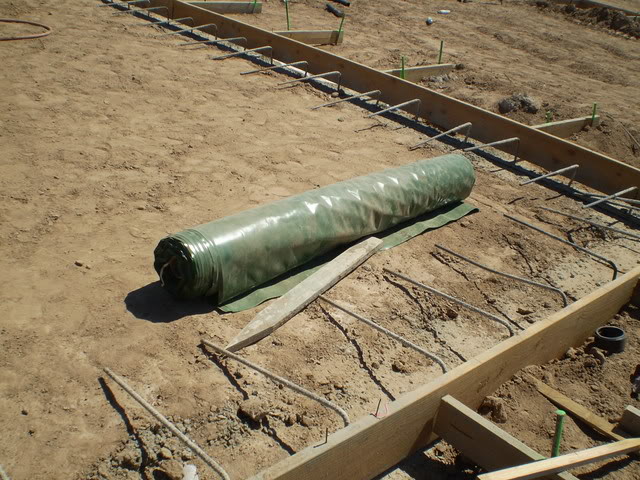Vapor Barriers in Concrete Foundations

Photo credit: premier-az.com
A vapor barrier is the key to waterproofing under a concrete basement or slab. Without a vapor barrier, moisture can lead to a damp floor, indoor humidity and mold. Concrete pros recommend vapor barriers even in dry climates because soil always harbors moisture, which the drier air will pull out. Vapor barriers must be chosen and installed carefully. Here's a guide:
How to Choose a Vapor Barrier
Traditional vapor retarders are typically made of 6-mil (0.006 inch) polyethylene. However, as the name suggests, they only slow down moisture. The material also may not be strong enough to avoid tearing when laying the gravel base or concrete.
Look for a true vapor barrier with a permeance value below 0.3 perms. Some products have permeance values as low as 0.01. Many of the same top-quality barriers are 15 mils thick, which should be strong enough to prevent accidental tears.
How to Install a Vapor Barrier
Add a strong, impermeable vapor barrier under the concrete. It can be installed over or under the gravel base under a basement. For a foundation on slab, install the vapor barrier under the gravel base. Overlap pieces by at least 18 inches, with strong tape on the edge of the overlap.
If you lay the barrier directly over the gravel base, it may be more difficult to lay the concrete. The plastic blocks water from settling out of the concrete. Instead, add a layer of sand over the barrier. To further help block water, you may also need to add drains, waterproof wall coatings and possibly a sump pump during construction of the concrete slab.
Don't Put Vapor Barriers in Concrete Walls
Avoid putting vapor barriers inside concrete basement walls. They can trap interior moisture in the wall cavity. The sealed-in moisture can potentially promote mold on the framing, insulation and drywall.
Instead, use rigid foam insulation, which separates wood framing or flooring from wet concrete and rot. However, it is still semi-permeable, allowing moisture to escape.
More Tips to Deal with Moisture
Also, finish a basement with latex-based paint, which doesn't block moisture. Over a concrete foundation, use a thick plywood subfloor and wood or cork flooring. Vinyl traps moisture, and damp carpets can harbor mold.
Additional Uses for Vapor Barriers
A vapor barrier may also be useful if you have to pour concrete when the temperature is cold. Of course, the middle of winter is not the ideal time to pour concrete, but if you have to pour concrete in cold weather, at least try to keep the concrete from freezing. Cover the slab with a vapor barrier, then spread some insulation on top (such as a few inches of straw or hay).
Vapor barriers are an important part of concrete construction, but they must be chosen and installed carefully.
When planning concrete projects, you may be tempted to try the work yourself. Find out whether it's something you can handle or whether you're better off hiring a professional. The situation often depends on what type of foundation you have.
Updated February 14, 2018.
Looking for a Pro? Call us (866) 441-6648

Concrete Average Costs
Concrete Contractors Experiences

Paving My Driveway Was An Easy And Pleasant Experience

Concrete Patio Is The Finishing Touch For An Artist's Studio



